Modern cameras can be set to very high ISO values. But the higher your ISO is, the more noise will be visible. There is a point when the noise levels become higher than acceptable. Do you know what high ISO value is still acceptable for you?
In the old days, light sensitivity of analog film was called ASA. The higher the ASA value, the more sensitive the film was. For a long time 400 ASA was pretty much the highest available. Higher sensitivity film was very rare. If you found it, these films had lots of grain making it almost useless for common photography.

An old Minolta XG-1 with the ISO (DIN-ASA) table on the back. You had to set the film sensibility once for all the 12, 24, or 36 frames you had to your disposal.
The term ASA has become obsolete and in this day and age we use ISO when we talk about sensor sensitivity. The biggest change since the old days, however, is the possibility to choose a different ISO value for every image individually. But there is one thing that did not change at all, and that's the increase of noise when turning up the ISO which is very similar to the increase of grain in film.
So much about history. Today we have access to ISO values that are astronomically high, especially compared to the old days. Once it was difficult to find ISO 1,600 film (1,600 ASA), but today we frown when we hear about a camera that has just a touch of noise in that sensitivity range. Camera manufacturers are often bragging about what the ISO sensitivity their cameras are capable of. It can get as high as ISO 102,400, ISO 409,600, and more. But they don’t talk about the amount of noise that occur at those astronomical ISO values. Would you dare to use a camera with ISO 25,600 or higher? Or are you afraid of the noise?
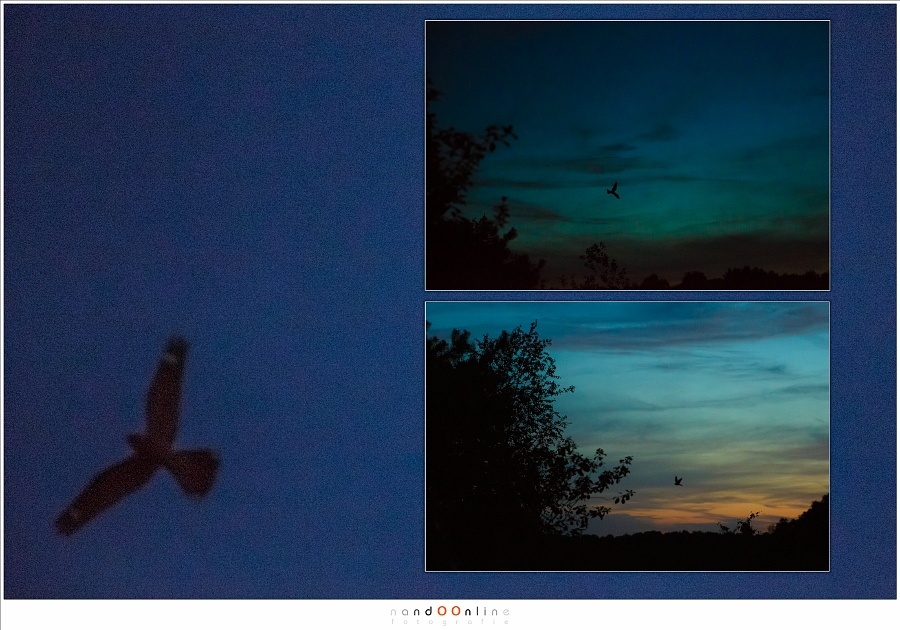
A European nightjar (Caprimulgus europaeus) shot during the end of twilight. I had to go beyond my comfort zone regarding ISO levels. But I got the picture. (Canon EOS 5D Mark III EF 24-70mm @ 70mm | ISO 12,800 | f/2.8 | 1/200 s)
Noise is a funny thing. The way we see the noise depends on many things. When a noisy photo is reduced in dimensions and size (for use on the Internet, for instance), noise will become less discernible. When you look at an image on your screen at 100 percent magnification, the noise might be very annoying, but the resolution of your screen can influence the appearance of noise also. And the noise levels may show completely different when you print your photo. Even the viewing distance plays a part. So there are a lot of variables that determine if the noise in a photo is acceptable or not. And I forgot to mention the most important one: every person has his or her personal preferences.
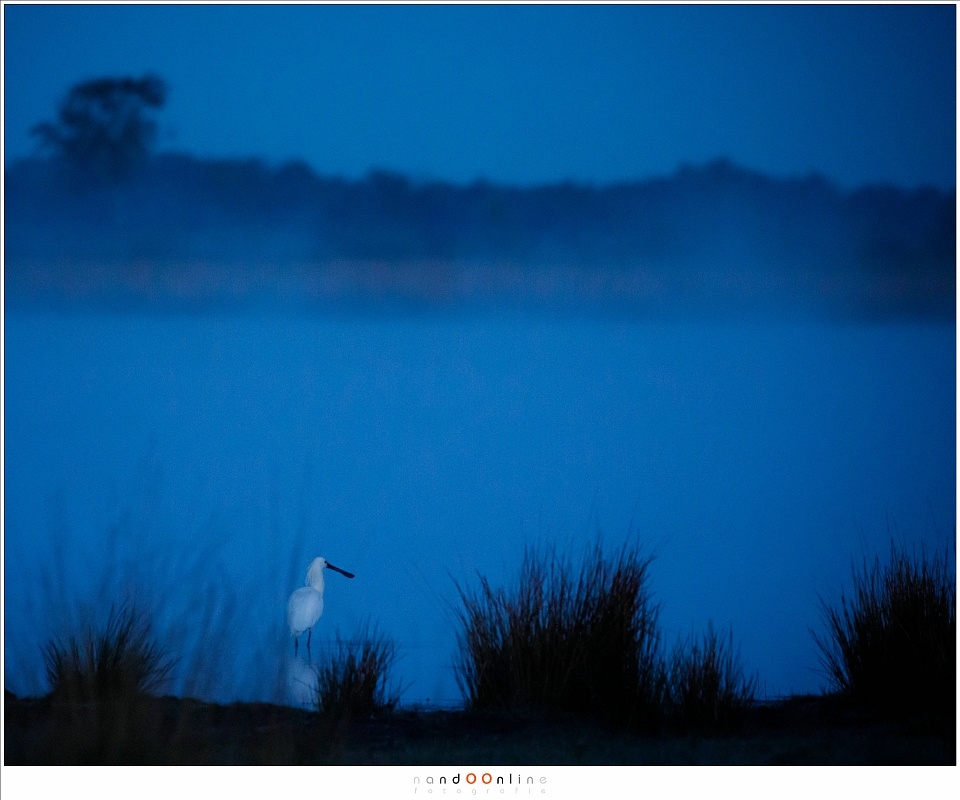
Modern cameras can go up to incredibly high ISO levels. I knew I could go as far as ISO 12,800 for the shot of this Eurasian spoonbill (Platalea leucorodia) and not any further. That was my personal limit. (Canon EOS 5D Mark IV EF 100-400mm L @ 400mm | ISO 12,800 | f/5.6 | 1/125 s)
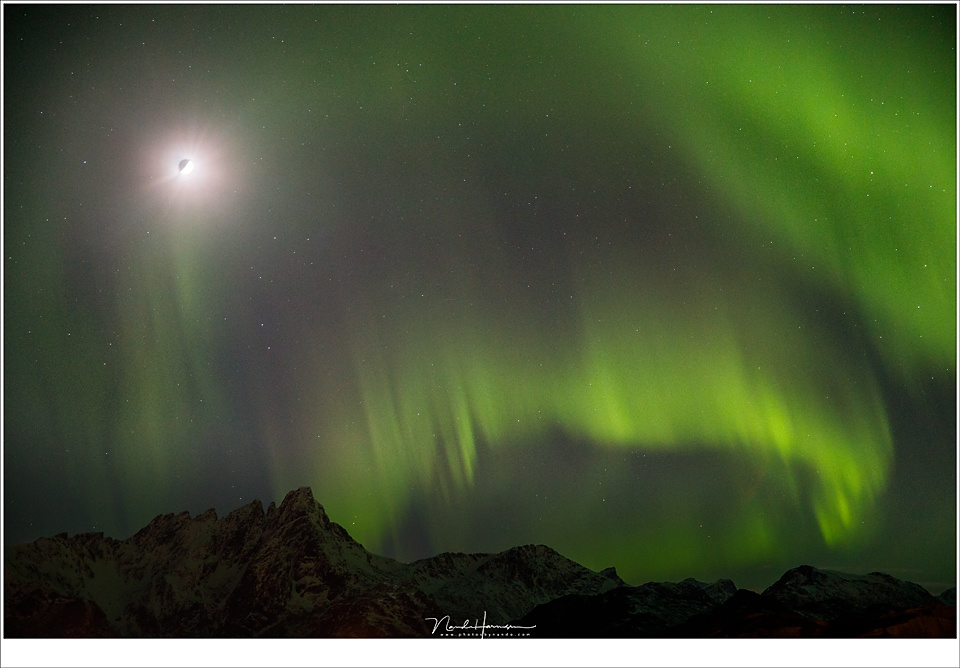
When you find yourself in these situations, you really want to know what ISO is possible without problems. So find out before you have an appointment with this amazing phenomenon. (Canon EOS 5D Mark IV EF 24-70mm L @ 55mm | ISO 3,200 | f/2.8 | 2 s)
In my workshops and masterclasses I often get the same worries when it comes to night photography and photographing the Milky Way, and every time the same question pops up: is my camera able to use such high ISO values? A lot of photographers seem to be afraid of using ISO 3,200 or ISO 6,400. Often they think ISO 1,600 is the absolute limit and they rather keep their settings way below that limit. When I ask them what they think about the noise levels of their camera, they cannot answer that. Then I push them to go beyond their comfort zone, and most of the times they are very surprised of what quality their camera can produce with extreme ISO values.
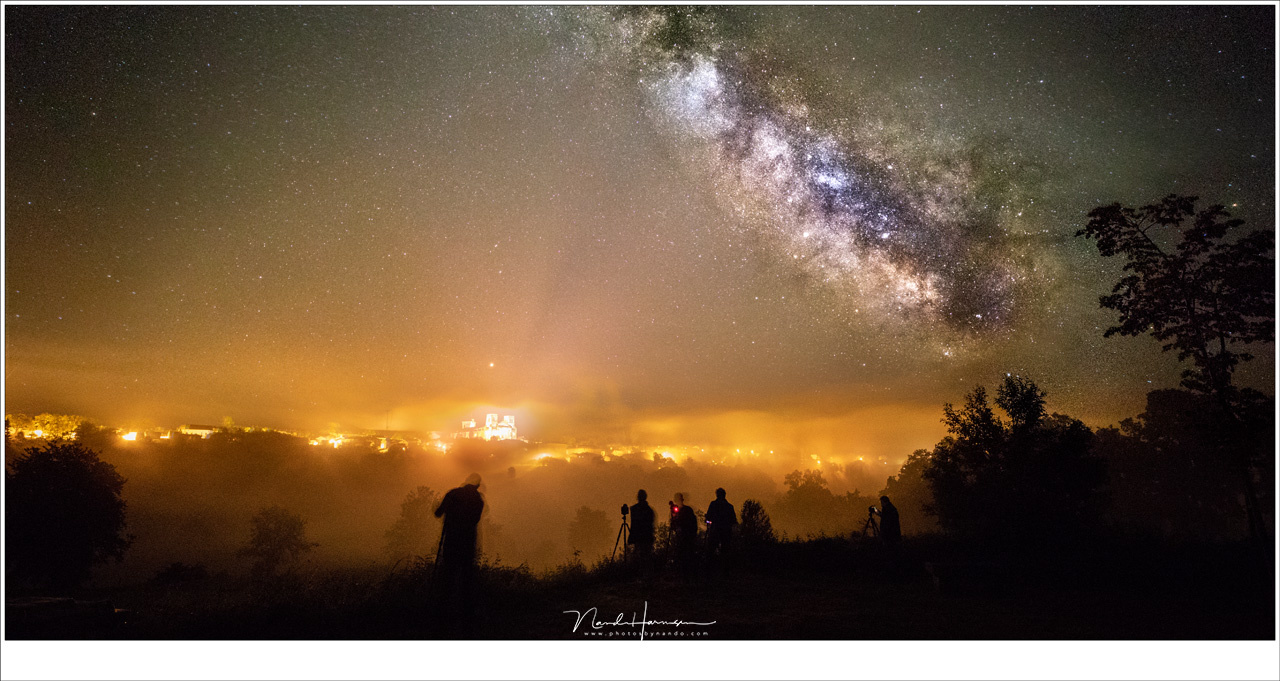
An image of the participants of my masterclass in the French Auvergne while they shot the Milky Way over the village La Chaise Dieu. I went all the way up to ISO 32,000 for this shot and another one with ISO 1600. (EOS 5D Mark IV EF 16-35mm L @ 16mm | ISO 32,000 ISO 1,600 combined | f/2.8 | 5 s)
So no matter what the manufacturer says about the ISO performance of their camera, or what others will tell you about it, the maximum acceptable noise level it is not set in stone and only dependent of what you find acceptable yourself. Therefore it is very important to determine what you find to be the maximum usable ISO value with your own camera.
There is a simple test that can determine your own personal maximum acceptable noise level of your own camera. Just place it on a tripod in a dimly lit room, and photograph something stationary with every available ISO value. Just start at ISO 100 and turn the dial one stop higher with every shot. Make sure you leave your aperture the same and just compensate with your shutter value. Go all the way up to the highest ISO value your camera is capable of. Make sure the exposure of every photo is the same, and make sure the light level in the room stays the same also.
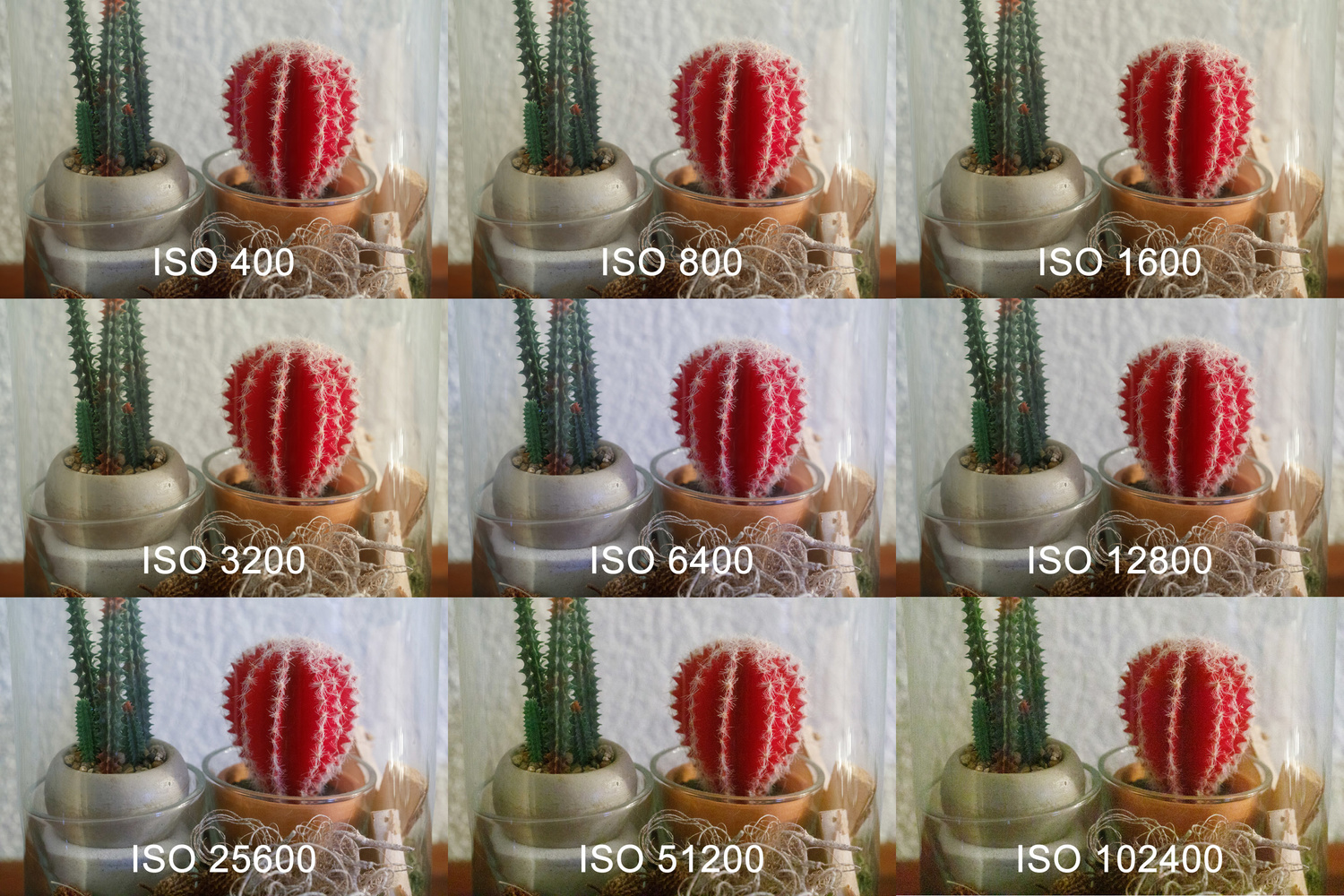
The ISO test of the Canon EOS 5D Mark IV (I left out ISO 100 and 200). I kept the aperture the same and compensated with the shutter time.
After that, load all the photos into your favorite photo editing software and check out the images without any post-processing. Compare all images full screen, and also on 150 percent and 200 percent magnification. This way you easily can determine where your personal ISO limit is.
With this little test, you will know up to what ISO value you can go without the risk of ending up with a photo that you find to have too much noise in it. You can even set limits on your camera to be sure you never go over your own limit.
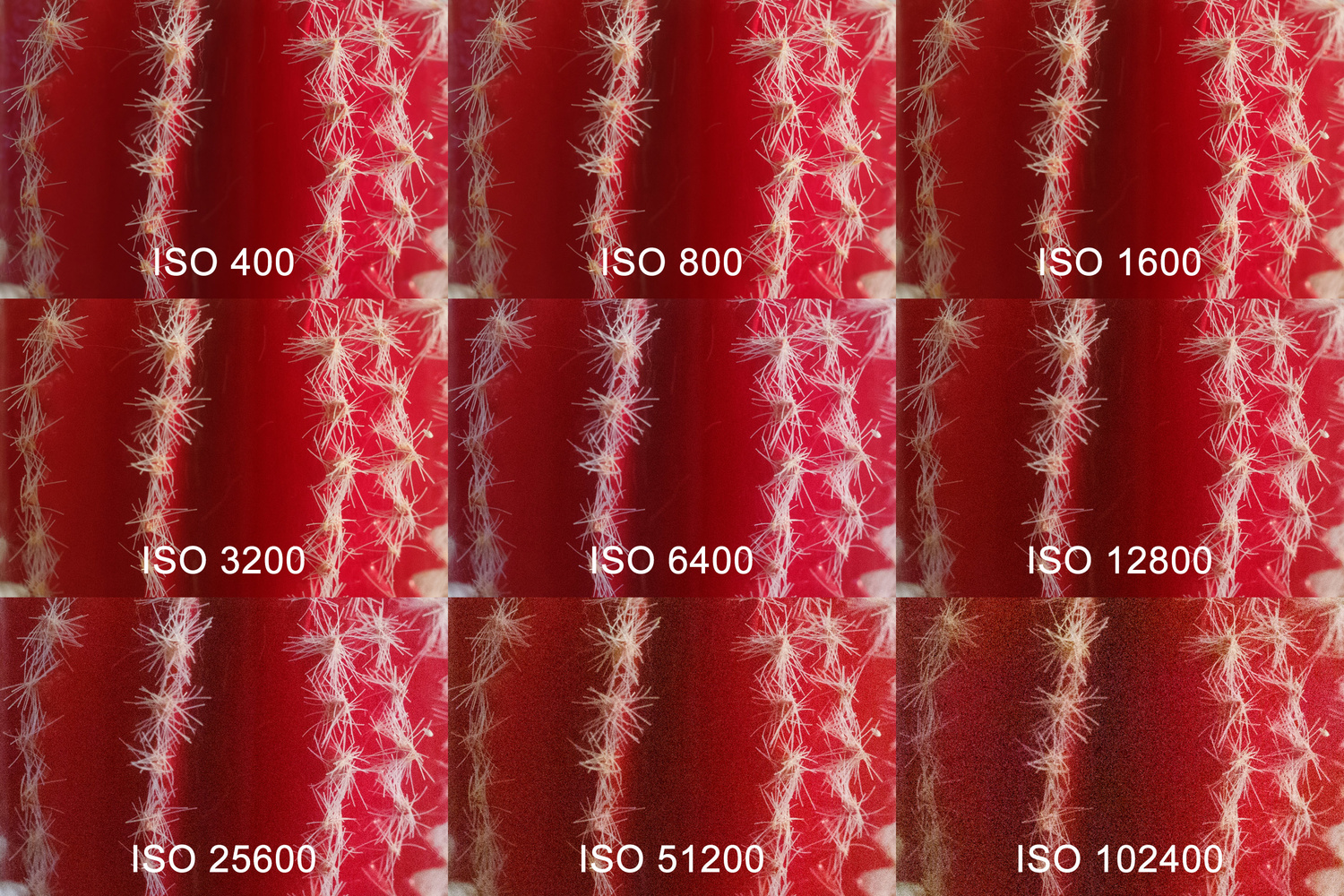
A magnification up to 100 percent from the previous photo collage. When viewed in bigger size you can determine what ISO level will be your absolute maximum. You can also compare at 50 percent, or printed on different sizes photo paper.

I did the same test with a Canon EOS 7D Mark II. Compared to the EOS 5D Mark IV this camera performs not as good. But that is not what I want to do. If you own this camera, the important thing is to determine your maximum acceptable ISO level.
You can vary this test. You can also do some post-processing to see how far you can go. Or you can send the (un)processed files to your printer or online printing service to see how the noise levels will turn out on a 4x6-inch print or a 8x12-inch print. You could be surprised how different noise levels show on a printed photo.
Remember, how you experience noise levels is very personal. Don’t rely too much on the verdict of someone else. Just take a couple of hours and find out what your camera is capable of, and determine until what ISO you dare to go.
It is possible on many cameras to set a limit on the ISO levels. This way you cannot go beyond that maximum acceptable ISO value. But be careful with those limits. Sometimes it is better to have a photo with too much noise than no photo at all. Especially when you have the chance to photograph something that is very rare, or has a lot of personal value to it. The memory caught in a photo can be much more important than any level of noise.
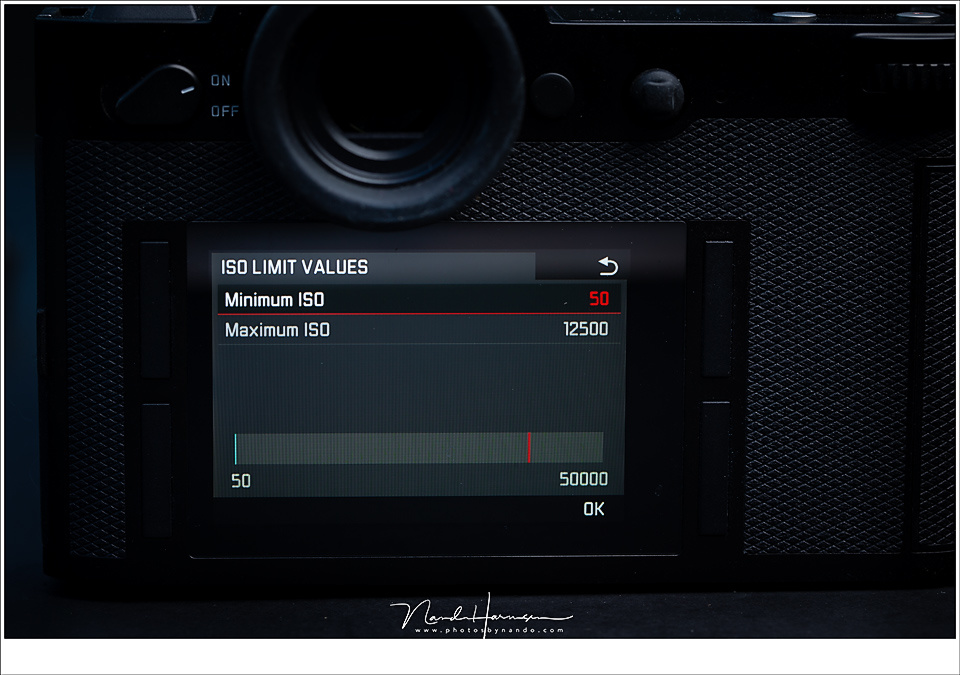
Most cameras have the ability to set limits to the ISO range available. Like in this example, the Leica SL is set to the maximum of ISO 12,800. Any value above that limit is not acceptable. The lead image is of this article is shot with this camera.
Have you determined how far your camera can go? Tell me in the comment below what camera you use and what your acceptable maximum ISO value is.
If you're passionate about taking your photography to the next level but aren't sure where to dive in, check out the Well-Rounded Photographer tutorial where you can learn eight different genres of photography in one place. If you purchase it now, or any of our other tutorials, you can save a 15% by using "ARTICLE" at checkout.







Only ever once gone over 6400. That was with a maxed out native ISO D4 at 11pm trying to shoot a DHL Boeing 777 landing in the pouring rain as I was hanging out the side door of a van at full-tilt down the taxiway. Not a nice experience. Physically or ISOy :)
Client was happy though, gave it some contrast and refined the noise a bit and called it art.
Haha, thanks for looking, William. Sorry, my text wasn't clear, I always stop myself at 6400, the occasion I didn't was the 777. I'd borrowed a D4 from Nikon Belgium to shoot that, I think I pushed it up to 12800 and maybe have pushed it to 25600, the native max ISO, if I recall correctly?
That with a 300mm F2.8 for the long stuff and other 2.8 lenses for the closer stuff, all wide open. It really was on the edge of 'doable' result was indeed a lot of noise, very low light, torrential rain filling the air and high winds lashing us about. All disguised a little as 'arty grain' The mission was to catch the plane incoming, with direct radio contact with the tower and pilot to know where he was touching down, race to the ramp to see the plane pull up, re-load cargo and turn around to get into the air before midnight, the cutoff point for Brussels airport.
ISO 64.
Seriously, though, I will rarely push my camera over 1600 and I would say that 3200 is pretty much where I draw the limit unless I plan to edit in monochrome.
Same here. Nikon D810
Same here. Sony A7
How high my max ISO is depends a lot on the image. When it is high key I am happily going 3 stops higher than in a low key one.
It depends on what I am shooting but I have gone up to 6,400 on a few occasions. I will go to 3,200 more often usually in wedding reception venues. I don't really see much grain at 3,200 and I have like all of my images at that ISO, Of course when I am not shooting a wedding venue, I stay at 100 and will try to stay at 100 whenever I can.
I shoot with a 5d mark iii & a 5d mark IV
Doesn't this fall under the category of know your gear? I remember testing different film stock, processing and then applying the things I learned to my paid shoots. My latest lessons have been about stage lighting and how my recently purchased 5DIV's work in that environment along with processing with Capture One v12.
Yes, know your gear.
I am always surprised how many people don't know their gear.
Being an amateur photographer I'm constantly working with ISO 3200 when travelling (cities at night, tripods slow me down too much), way good enough for the web and decent shots for family albums. For family stuff I go up to ISO 12800, grain sometimes add mood to scenes I otherwise wouldn't have captured.
For work, I guess, the approach is completely different.
Have you ever thought about auto-ISO? I think it works perfectly for your photography
LOL Yes, of course, thanks. I wasn't precise: I meant 3200 as maximum ISO when travelling, just 12800 as maximum for certain family events in museums (you know, modern type of birthday parties with dinosaurs and such, where flash isn't allowed).
The great thing with the 6Dii is that one can set -1ev in Aperture priority and then switch to manual plus auto-ISO and still get -1ev to prevent highlights from blowing out at night/street.
I don't know why but different ISO levels produce different levels of noise under disparate conditions. I have a very few photos where 800 produced too much noise and others where 6400 wasn't bad at all. ¯\_(ツ)_/¯
I’m always perplexed by these claims that modern cameras at ISO 3200 produce pretty clean images. I’ve never actually seen that in real life and I’ve shot with many modern “pro” cameras, including the Sony A7s. I can always tell by ISO 400 that there’s noise/artifacting that doesn’t belong. I still say that even today ISO 1600 is the practical limit one should go to. ISO 400 and below in ideal circumstances.
Unless they have really bad monitors or just are accustomed to image noise I don’t know how to explain it.
Are you always scrutinizing your images on 100% when looking for noise?
The highest ever ISO I used with a photography I actually published (considered as a valuable take) was shot with ISO51200 with a Phase One IQ3 100MP Achromatic.
I was taking a photo of the Milky Way through an infrared filter, so I had to crank up the ISO a bit to get an acceptable shutter speed at f/4. :)
https://500px.com/photo/213611415/
I've seen photographs with the new IQ4 Achromatic with ISO102400 which looked fine (somewhat noisy, but because of the lack of colors, the noise was less distracting than usual).
Large sensor cameras can have less noise indeed. I never had the opportunity to shoot with a Phase One yet. I hope I can experience that one day.
I shot my Canon 6D Mark II at 12,800 ISO during a concert in what has to be the worst lit venue ever. Came out useful, but somewhat noisy you could say. Normally I don't use over 3200, some times 6400, because most venues I shoot at are well lit.
Check to see if your camera's ISO-invariant as well. If so, then you can selectively push in processing later.
That is for another article.
I find that the subject matter is very important in what I find 'acceptable' Busy images tolerate digital noise much better than simpler ones- the eye is too busy looking at the objects in the image to notice the noise. But- given a solid expanse of a solid color- especially a dark one- and the noise becomes the 'subject'... But I believe a viewer will usually tolerate and accept noise better than an image with unintentional motion blur or lack of sharpness in depth because of shooting at f1.4
I don’t have a specific value that I stop at or “won’t” go past.
The use of the photograph needs to be kept in the forefront of the photographer’s mind before they set a limit on where acceptable limits of iso are used.
If your camera is producing so much noise that it renders your image unusable when you’re zooming 1:1 but your intended platform is Instagram, I’d reevaluate your thought process.
If you’re cautious about going past 3200 and you’re printing your work on a regular basis, I’d suggest you spend a few bucks and print something using 12800 and see how unappealing it really is; I can promise you you’ll be surprised (if you expose properly).
If your camera can’t handle 3200, this is the one time I’d say you NEED to get a new body.
If your camera can't handle 3200 it is not necessary to get a new camera. Not everybody needs high ISO values.
True, not everyone needs them but if someone does they would be reading this article right?
There is a lot of life happening in the darkness.
The last several years I have really pushed myself and my camera (still using a Nikon D800 with some very nice, very fast lenses). I spent a lot of time not just taking test shots in low light, but also seeing how they could be processed in Lightroom. I did entire photo-shoots with low light requiring me to open all the way up to f/1.4 and use (my personal minimum for handheld) 1/200th shutter speeds. I left my strobes untouched and just used inexpensive LED ring lights starting at their lowest power levels to figure out what minimum levels of ISO I was comfortable with.
It also taught me different ISO levels can really affect the overall "look and texture" of the grain created by the sensor. For example, ISO320 looks just about perfect as long as their is enough light (and by "enough" I mean I can even under-expose by a full stop or even two and still get pretty images as long as the overall balance of lighting is still aesthetically pleasing to me). But if I push it to ISO500 and compensate on my exposure triangle (like boosting shutter speed) it just doesn't look as good... but then neither does ISO200 even in slightly better light.
To me, 500 is often just too much grain, even compared to an underexposed ISO320 shot. And ISO200 starts to look oil-painting-ish, and not realistic on my D800. It would probably be different on different cameras. In different light levels there are different sweet spots for different sensors in my experience. You just have to do a lot of personal testing with your particular setup to figure out what those are.
These tests helped me become much more confident in situations where I'm pushing the ISO to1600 or even 3200 (my personal limit most of the time). The bottom line is I am not surprised by the outcomes of shooting in those low-light situations. I know pretty well what compromises are worth making, and which ones are going to leave me results I'm not really stoked about.
One of my main goals the last couple of years has been to try and (as much as is possible) develop a processing style that would make my images look somewhat consistent whether they are shot at ISO100 in broad daylight or at ISO1600-3200 (my personal limit) in a dim bar somewhere. One thing I discovered is that I don't actually like shooting at ISO100 in general. I try not to go lower than 320 in most situations simply because I have found that is the most pleasing balance between high detail and the "natural" grain created by the sensor. Not everyone has perfect skin, and it tends to be more flattering for most people overall with this particular camera.
My personal photographic reference standards are based mainly on a lifetime of looking through Memoirs and Biographies of famous musicians with photos taken by various famous photographers (and some that simply became famous due to their photos of these bands). Because of my age (43) and the time periods for musicians in question, most of these photos were taken on film. A lot of these images, even fairly famous ones are grainy AF by today's standards. But none of that stops the power of the images. The lesson I draw from this is that graininess is less important than capturing a great moment. With today's powerful low light capabilities in modern cameras, even more "life" can be captured - especially the kind you experience in the darker areas of your life (literal dark areas, not symbolic dark areas). =)
And it's important to remember when taking the photos to take a set mental images of the space. When you go and process, try and remember what the light and shadow levels looked like in your mind. Don't push your processing (as in recovering detail from shadows or upping the exposure) too far beyond what could have been seen with your naked eye.
As powerful as our eyes are compared to camera sensors, there is no point in dragging out details from the darkness in a photo when you would not have been able to see those details with your naked eye in the first place standing in the space. Incredible digital sensors have shifted our perception of what "good" looks like and is definitely skewed towards well lit situations. Cool shit doesn't always happen in well lit situations. So are you just going to ignore all them with your camera? Pfft... Hack!... which, if we were good buddies, is what I would say to you in order to shame you into taking bigger risks in lower light. You will be rewarded for you efforts with images that cannot be captured in any other way, and you will become a better, more versatile, more fearless photographer.
Learn your camera. Embrace the darkness, but always look for the light that IS in the space you're shooting. It's usually more than you think.
The last two lines can be interpreted symbolically as well as literally if you wish. =)
Thanks for your thoughts
If I read you correctly, image noise is not just ISO - it also includes shutter speed. IE slower speed means more noise.
Well, if it seems like I implied that "slower speed means more noise" that wasn't intentional (I can't be sure which sentence or paragraph you referring to exactly). I don't always explain things very well, so maybe what I wrote is confusing. But that's not what I intended to say.
As far as I know shutter speed doesn't itself affect noise directly the way ISO does as a single setting, it simply affects the overall exposure, which in turn affects noise levels.
I did many combinations of tests, but where I started was to set my f-stop at f1.4 and my shutter at 1/200th of a sec because I knew those were my preferred limits (f1.4 because that's as wide as the lens goes and 1/200th shutter speed because personally, that is the slowest I am comfortable with for freezing motion on a subject that might be moving slightly).
Then I tried two approaches to balancing my exposure. I did sets of images where I only raised and lowered the light levels with my light source with a static ISO, and then other sets where I kept the light level static and just changed the ISO levels. And then I did sets where I changed light and ISO levels so as to produce "proper" exposures from a metering point of view.
Many under-exposed and over-exposed images were created this way and I compared them all in light room against the "correctly" exposed images. I then tried correcting all of the images, including the under and over-exposed ones so that they all looked at them as consistent to each other as I could get. For example, trying to process images 3 stops over exposed and 3 stops underexposed so as they look as much like each as possible. Needless to say, there were a lot of compromised results from a quality point of view, but visually, looking at the various results I learned things about how my camera renders images at these different settings.
As you might imagine, there is a lot to learn from studying these images. The purpose of the test was really about setting correct exposure so much as simply training my eyes and my mind to make connections between light levels and exposure settings and compare that to what I've learned about those combinations are likely to be rendered by my camera sensor so I can make educated exposure decisions more on the fly that I am going to feel confident with by the time I get the back to my computer for processing.
If a person is shooting everything at ISO100 and strobes, none of this is very relevant. But I shoot in a lot of bars without a flash, and even the studio sessions I do are fairly low light by today's standards just because that is a look I dig these days.
Audio engineers spend years and years training their "ears" You will hear the term "golden ears" in the industry to note someone who can simply listen to something and break down all kinds of technical things about what they hear in order to make mixing decisions on the fly. Photographers can do the same, but it just takes time, and you can learn more stuff faster by doing intentional tests on your own. Because this is a type a training that cannot be done by watching a youtube video. You really need to train your eyes and that just takes time, but it doesn't have to take 20 years to develop either.
Did this reply need to be this long? No, definitely not... but I spent a lot of time testing, and no one but photographers give a shit or even understand what I'm talking about, so there it all is. =)
So much depends on usage. If I'm shooting for a web page which will post something at 800 pixels, you'd be amazed how noise becomes harder to see when rezzed down. I've gotten tolerable results on a crop sensor camera at 16,000. It's grainy, but frankly better than some of the stuff we saw in the 1970s in film.
On top of that, software improvements continue to amaze me. I have stuff I could have never used even five years ago that I can now salvage pretty well.
But generally for paid clients I try to keep things at 6400.
Indeed, you can go up to ISO ridiculous when your shots are only for small web sized images.
I'm reluctant to push my 7D Mk1 much over 500, tho' I will if pressed. I like the idea of the test, so will do that soon.
PS I understand some cameras go to ISO 50, but why not crank all the way to say, ISO 1 or maybe 5?
Wouldn't that be equivalent to an ND filter?
PPS I Never use auto ISO.
All cameras have a base ISO value. For instance; Nikon used to have ISO200 but now goes all the way to ISO64; Fujifilm used to have ISO200 as well; Canon has ISO100 as a base value.
Lower than its base ISO values means reducing the signal strength of the sensor, and this is not always good for your image quality. That is why it is mostly limited to 1 or perhaps 2 stops below the base ISO value
I did not know that it was possible to push the ISO over 50…
I shoot digital like the film days, i never go pass iso 400
You also had Kodak ISO1000 film, or Fuji ISO1600 slide film in the film days... :)
I'm amazed at some of the responses here, people talking about that one time they dared to hit 6400. It's pretty simple.. when you're as wide as your lens will allow, at the slowest shutter speed the action dictates, your ISO should be what it should be to get a properly exposed image. Either underexposing or allowing motion blur is worse option than additional noise. I work in sports - 6400-10,000 is pretty standard for a HS gym, and with something like night downhill skiing you might hit 52k. Oh well, get a FF camera and hope for the best.
Well don't be afraid of the noise, but also don't do looking for it
Everyone is entitled to have their own thought and opinion about it, don't you think?